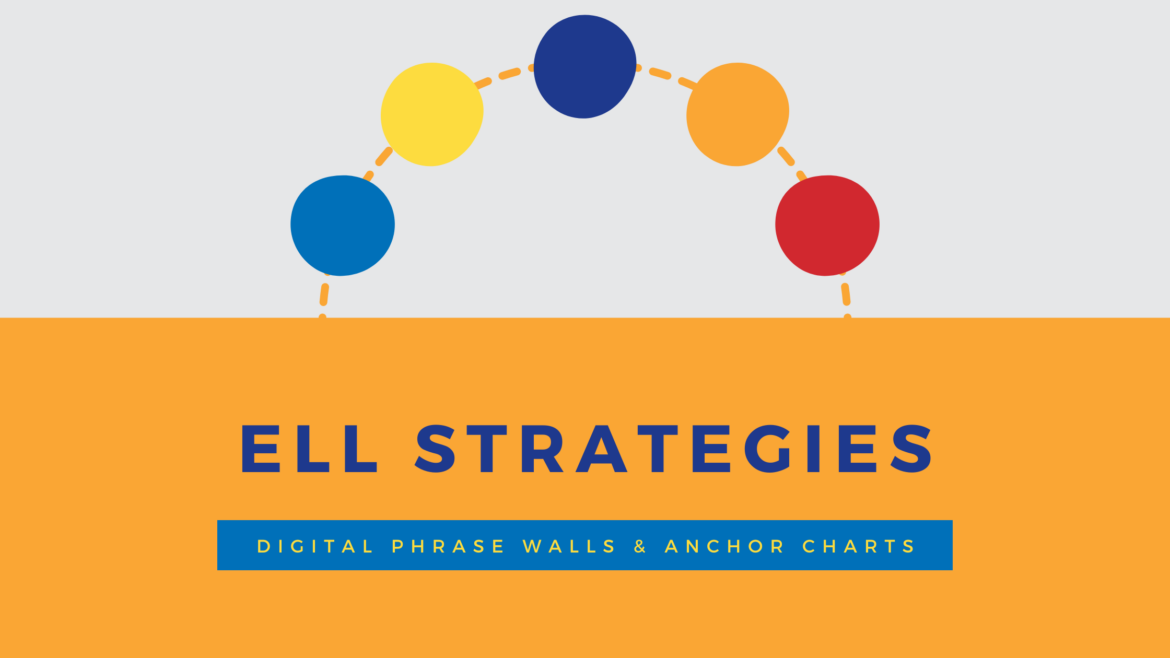“My principal wants me to use anchor charts, or at least, hang some on the walls” an experienced teacher told me recently. “I’m just not sure I get the value.” I immediately started to explain why anchor charts are so important, and then sputtered to a stop, like a car running out of gas, realizing that I could not articulate why they were beneficial. In this blog entry, let’s explore the benefits of anchor charts, phrase walls, and technology for use in English Language Learner (ELL) classrooms. Of course, these approaches work for monolingual classes as well.
Before we do that, let’s review what anchor charts are, courtesy of Rhonda Stewart (Scholastic) for the quote:
…an anchor chart is a tool used largely to support instruction and to move the student towards achieving success with lessons taught in class. They are also used as a classroom management tool for students to self-monitor their behavior by gently reminding them of expectations and routines. Anchor charts are created during the instruction of the lesson. As the teacher models the lesson or strategy, the lesson reinforcement or strategy tool is written on chart paper. Once the lesson is complete, the chart is placed in a convenient student-friendly location so that the students can access it independently….
The beauty of an anchor chart is that it can be displayed as needed or determined by the student work. Some anchor charts live all year long in the classroom, while others are only displayed during the current unit of study.
One of the key phrases is that “anchor charts are created during the instruction of the lesson.” A question that comes to mind is “How can we transfer ownership of the anchor charts from the teacher to the students and use technology to generate the chart?”
Here are three approaches to try:
- Create a Padlet: Although Padlet can be used to create a word wall, you can easily share expectations for what “talking” should sound like simply by having students audio record themselves and share that in the Padlet itself. You can also include other content (e.g. text, video, images). Then make the Padlet available on a device like a digital projector or large screen television/monitor. If working with classroom centers, setting up a computer screen monitor connected to a mobile device will also work.
- Create a Thinglink: Think of ThingLink as a virtual interactive wall, which makes it great to combine with a large touchscreen monitor.
- Create an Infographic: Having students create infographics that they can share and then hang on the wall can be very engaging for them. Not only have they recaptured ownership of the anchor/phrase chart, but they are able to pull information from others in the classroom. Each contributes their own part.
What other strategies do you see as effective in ELL to create expectations for how students should interact? While you are reflecting on that, consider the following point that Nancy McNeal emphasizes in her blog Learning Twice regarding anchor charts:
The brain-based research of Marcia Tate and others support the use of visuals to incorporate new learning into memory. When the visual represents a learning event that includes the students, it becomes an artifact of the learning experience. It has meaning for the students because they participated in its construction. [emphasis mine-MG]
Are you ready for ELL students to become co-creators of their learning? THEY are.
Join the ongoing TCEA Microsoft Innovative Educator (MIE) SkypeChat via your mobile device or online. Explore and share concepts at the intersection of teaching, learning, leading, and technology!


